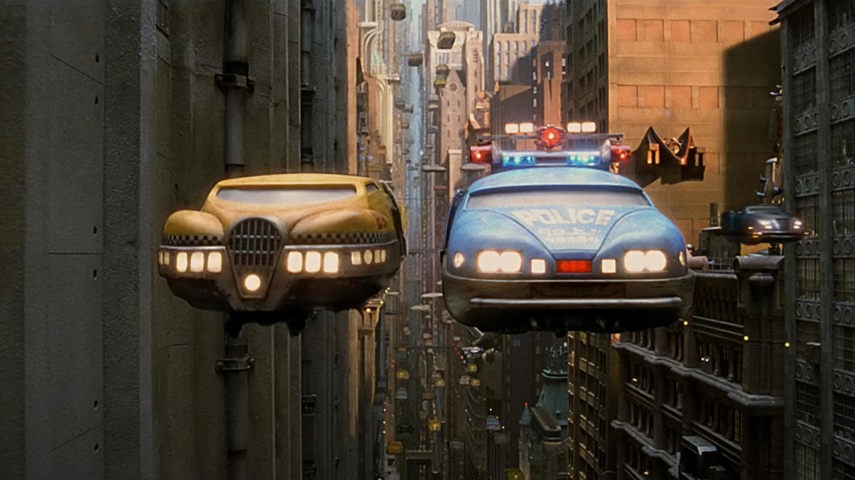Since the dawn of Hollywood, movies have given us a glimpse into the future. Movies have also been a source of inspiration for the automotive industry, offering a peek into the future of transportation by depicting advanced technologies such as driverless and flying cars.
From Minority Report to Blade Runner, these films have predicted the future of cars, showcasing how vehicles could enhance drivers' lives. In this article, we will explore some of the most popular movies that have predicted the future of cars, examining the technology and vehicles depicted in these films. So sit back and buckle up as we drive through some of the most exciting cinematic imaginings of the future of cars.
Navigation Systems
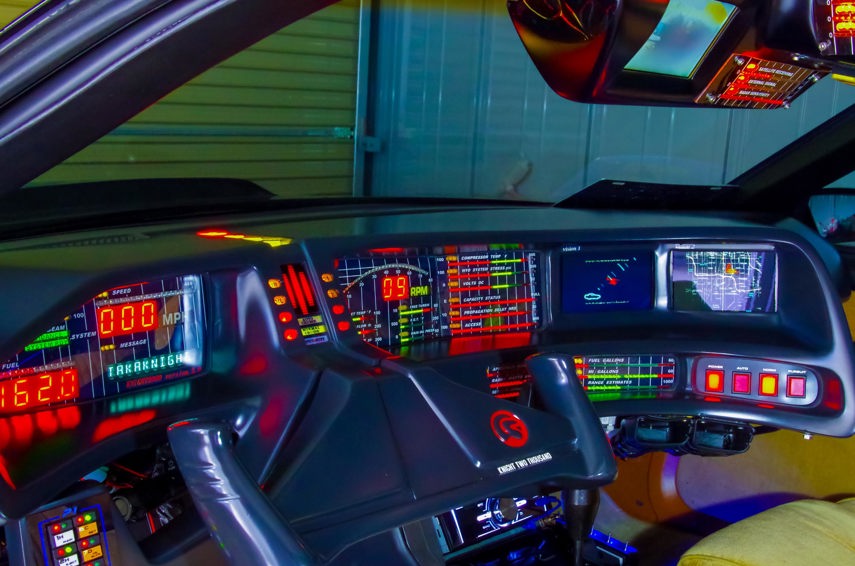
How comfortable do you feel driving to a new location without a navigation system? Unsurprisingly, futuristic movie cars often feature advanced mapping and navigation systems.
GPS (Global Positioning System) devices, which provide turn-by-turn directions and determine a car’s location using satellite signals, were introduced in cars in the late 1990s. However, the technology behind GPS has been in development since the 1970s.
In films, this technology is far more glamorous. Famous for its long-running TV series, the movie version of Knight Rider from 1982 featured a car with an advanced navigation system. The fictional car named KITT had a highly advanced GPS that could help the driver navigate, provide real-time traffic updates, and display detailed maps of the surrounding area. We consider all of this tech normal today, but in the ‘80s, it was seen as futuristic. Additionally, the system is integrated with KITT’s artificial intelligence, allowing the car to anticipate and respond to the driver’s needs.
The movie Back to the Future Part II features a car with a holographic mapping system. In the movie, Doc Brown uses a holographic map to show Marty where he will find his future son to prevent him from committing a crime. The map is a 3D projection allowing the characters to navigate different time periods and locations. Can you imagine an advanced navigation system that helps you traverse space and time?
Autonomous Cars
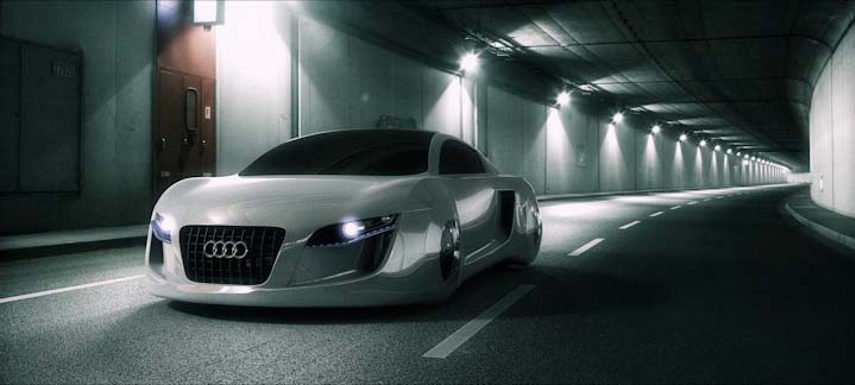
If you’ve ever seen someone multitasking while driving, you’ve likely wished for the future of self-driving cars. Today, self-driving cars use a variety of sensors, such as cameras, radar, and lidar, to gather information about their surroundings. Powerful onboard computers process this data and use advanced algorithms to make decisions and control the car’s movements. This allows self-driving vehicles to respond quickly to changing road conditions and obstacles, making them potentially safer than human-driven cars.
Self-driving cars have been featured in numerous films and have become a symbol of the future of transportation. For example, the 2004 film I, Robot depicts an Audi RSQ model car equipped with a highly advanced navigation system that can predict traffic patterns, automatically adjust its route to avoid congestion, drive itself, and even park itself. Additionally, it has a virtual assistant that interacts with the driver and passengers, providing information and entertainment.
The 1990 film Total Recall, set in a dystopian future, features a self-driving car that can be controlled by voice commands. The Transformers franchise, meanwhile, showcases self-driving cars called Autobots, robotic alien lifeforms that can transform into everyday vehicles with advanced artificial intelligence and independent decision-making abilities.
As the technology behind self-driving vehicles continues to develop, many autonomous concept cars have interiors that look more like a living room than a car.
Ride Hailing and Autonomous Taxi Fleets
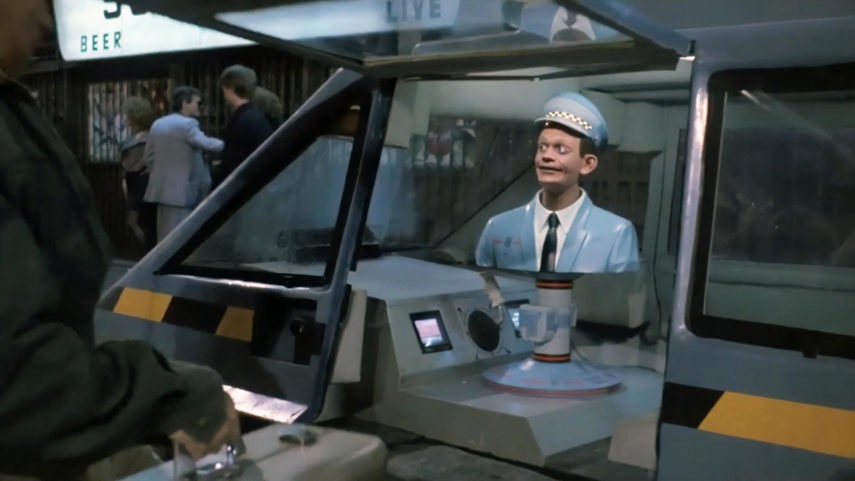
Movies have long predicted the shift away from individually owned vehicles to fleets of on-demand autonomous taxis. The Jurassic Park movies featured fleets of self-driving electric pods that bring visitors to different locations in the park. The fleet is controlled by a central computer system for safety and efficiency, similar to what is being developed in real-life autonomous transportation systems today.
Automakers, ride-hailing service operators, and municipalities are experimenting with – and deploying – autonomous fleet vehicles. Waymo, Cruise, and Zoox (owned by Alphabet, GM, and Amazon, respectively) are all currently operating robotaxi fleets in California; while self-driving microbuses are popping up in small towns and events like the Olympics. As the technology behind self-driving cars continues to advance, the prediction for on-demand autonomous taxis is becoming a reality, with the potential to improve safety, efficiency, and convenience for passengers in major cities worldwide.
Anthropomorphism
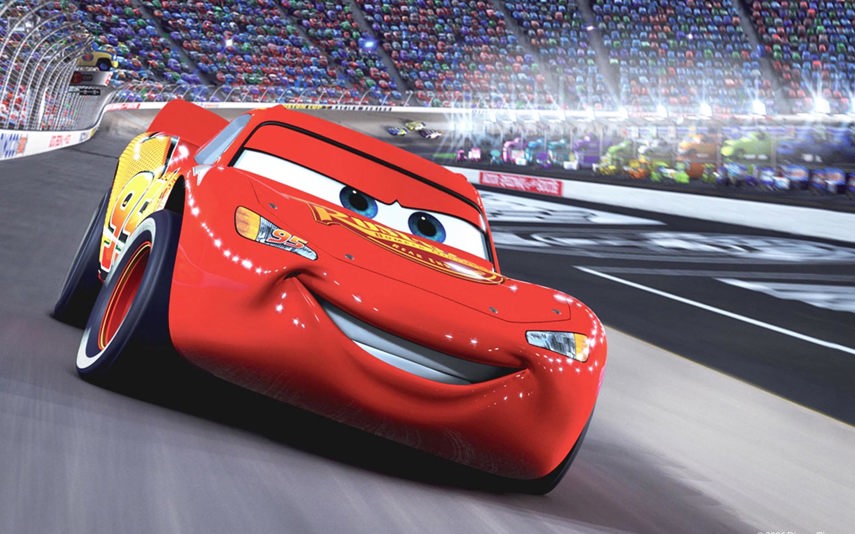
Is that Volkswagen Beetle smiling? Does a Pontiac Grand Prix look like Leonardo DiCaprio squinting? In recent years, movies have predicted the future of cars taking on human-like traits, known as anthropomorphism. This includes human characteristics, emotions, or behaviours and is a common trope in children’s movies and TV shows.
From the iconic Pixar movie Cars to the classic family movie The Love Bug, race cars are often portrayed as having bigger-than-life personalities. Cars is an entire movie about talking cars, while The Love Bug features a Volkswagen Beetle named Herbie that wins races and gets its drivers into wacky hijinks.
With a government-mandated front licence plate, you could be forgiven for thinking that a Mazda MX-5 bears a buck-toothed grin. But automakers have flirted with the idea of making their cars more expressive, as seen in concept vehicles like the Honda Urban EV concept, which featured an LED grille that could display messages (like “Hello!”) or emojis. BMW has taken this concept a step further with a 2023 concept car called the Dee, which can change its exterior colour on the fly, either across the entire vehicle or in specific patterns, perhaps in the shape of a heart for Valentine’s Day?
Electric Cars
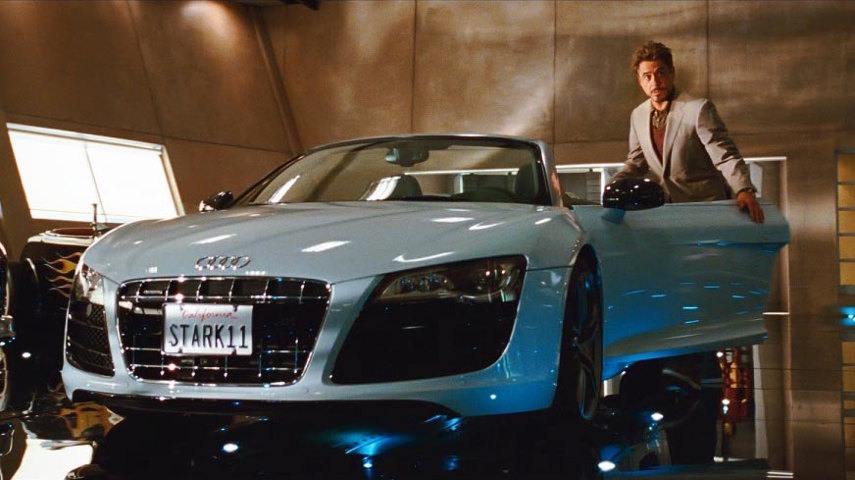
Electric vehicles are a recurring theme in movies depicting the future and symbolize advanced technology and progress. EVs are common today and getting more popular, but they were once the stuff of movie dreams.
In the 2017 film Blade Runner 2049, set in a dystopian future, autonomous electric cars are a common mode of transportation. The film depicts a world where most cars are self-driving, electric vehicles with sleek, futuristic designs capable of navigating the city’s busy streets without human input. They also have advanced technology, such as voice recognition and holographic displays – something we’re starting to see in the form of augmented-reality head-up displays.
Similarly, in the 2015 film Avengers: Age of Ultron, Tony Stark (Iron Man) drives an Audi R8 e-tron, a fully electric supercar worthy of a superhero.
Flying Vehicles
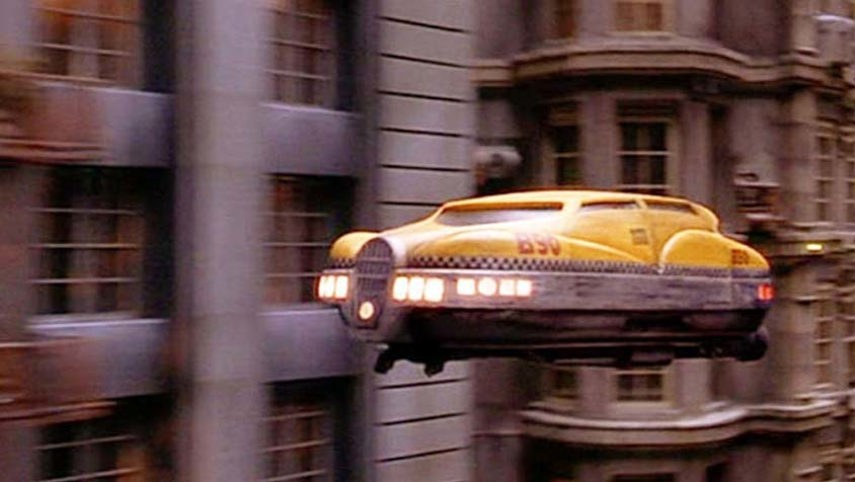
Hate sitting in traffic? Flying cars are often seen as a potential solution to traffic congestion and limited mobility on the ground. Movies have long predicted a future with flying cars – be it the iconic spinners from Blade Runner or the flying yellow cabs of a 23rd-century New York City in The Fifth Element – but in reality, such vehicles’ development depends on overcoming technological and logistical challenges.
Currently, personal air transport means helicopters and private jets. However, the development of a flying car capable of flight and highway travel is underway. Several companies, such as AeroMobil, Terrafugia, PAL-V, Urban Aeronautics, and Joby Aviation, are investing in the research and development of flying cars, making it a potential reality in the future.
Voice Recognition
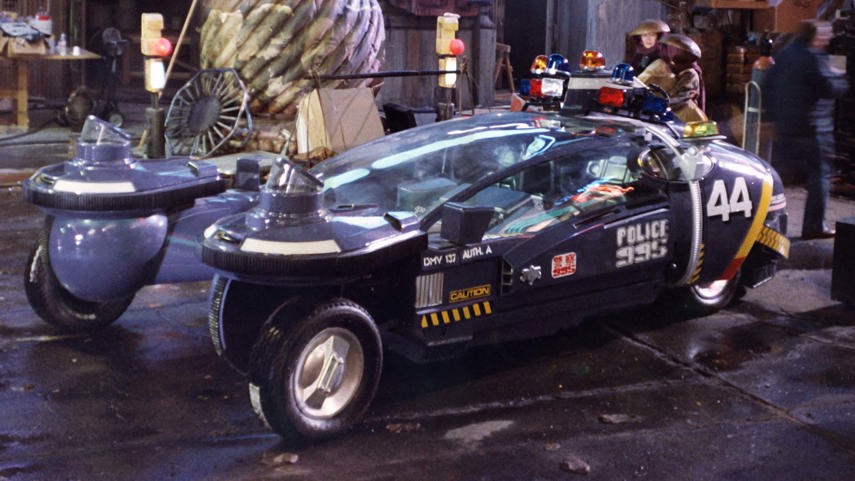
Movies have featured voice recognition technology for several decades. An early example is the 1967 film 2001: A Space Odyssey, which featured a sentient computer named HAL 9000 that could understand and respond to human speech. Nowadays, voice recognition technology is becoming more common in cars, allowing drivers to get directions and send texts hands-free, which is required by law in Canada.
Movies like Blade Runner and Minority Report accurately predicted the future of car voice recognition systems. These movies depict cars equipped with advanced voice-activated systems that enable drivers to quickly and easily enter locations while driving and also use voice activation to control the vehicle’s speed and other settings.
In Iron Man, Tony Stark can do more than use voice commands to control the car’s navigation system and play music. He also uses simple phrases such as “Start the engine,” “Open the trunk,” and “Armor up” to control various functions of the car. Similarly, in the movie Herbie: Fully Loaded, the car can understand human speech and respond to commands, including “Herbie, start the engine” or “Herbie, let’s go racing.”
Many of today’s luxury vehicles have similar functionality. In some Mercedes vehicles, for example, you can say, “Hey Mercedes, it’s cold in here,” and the car will respond by turning up the heat.
